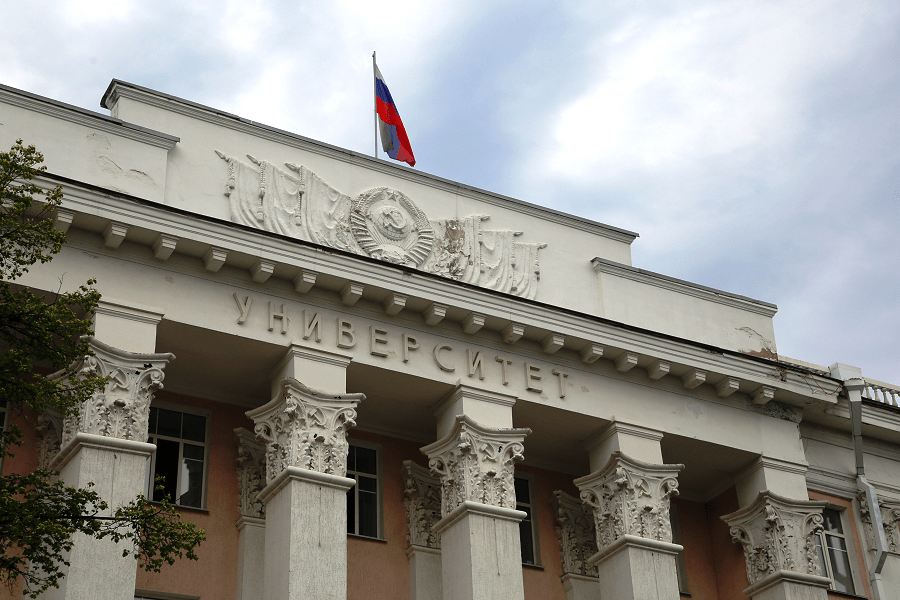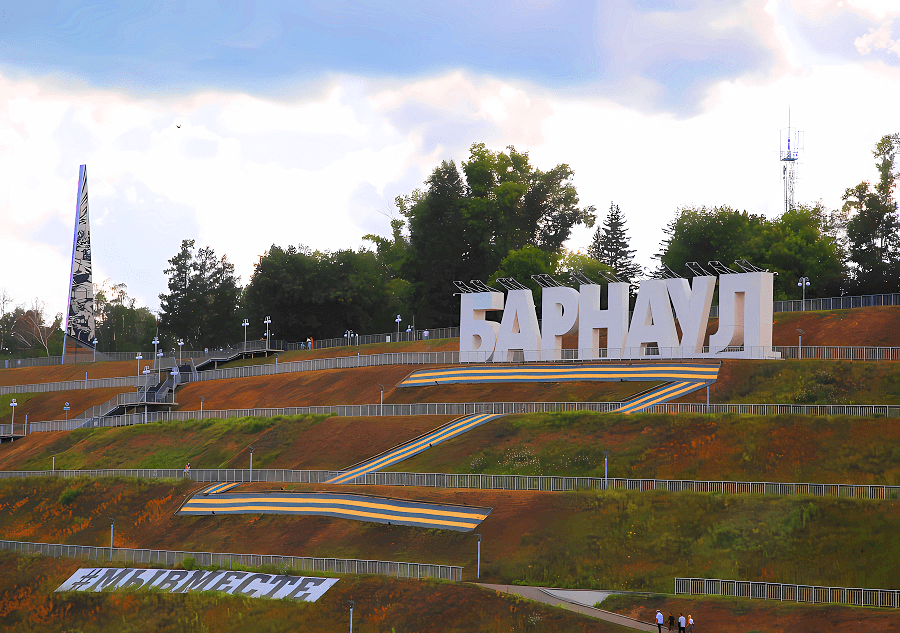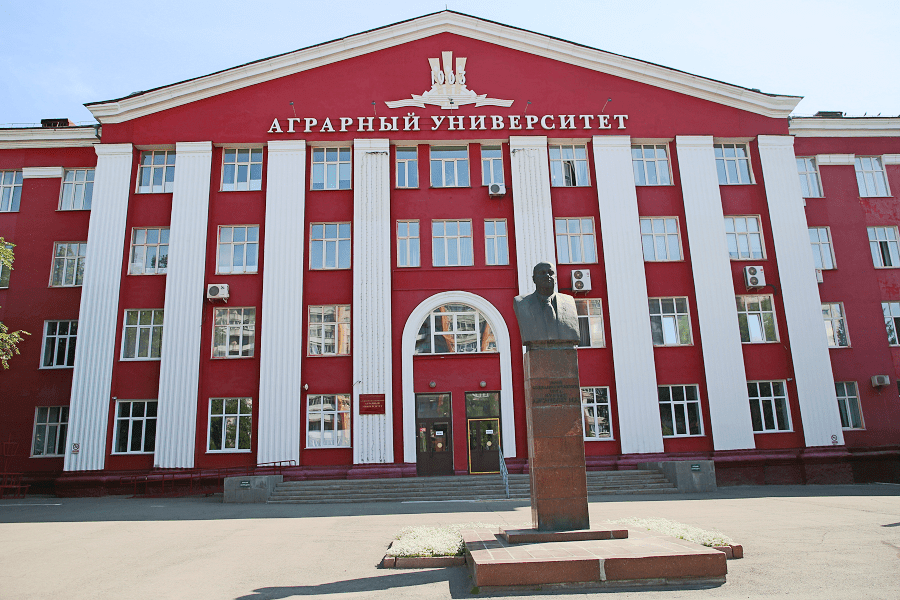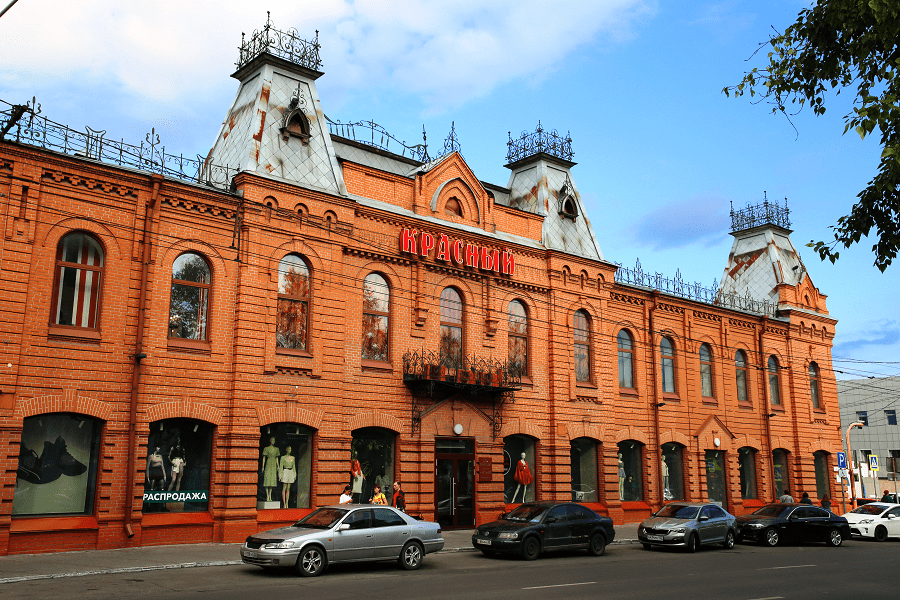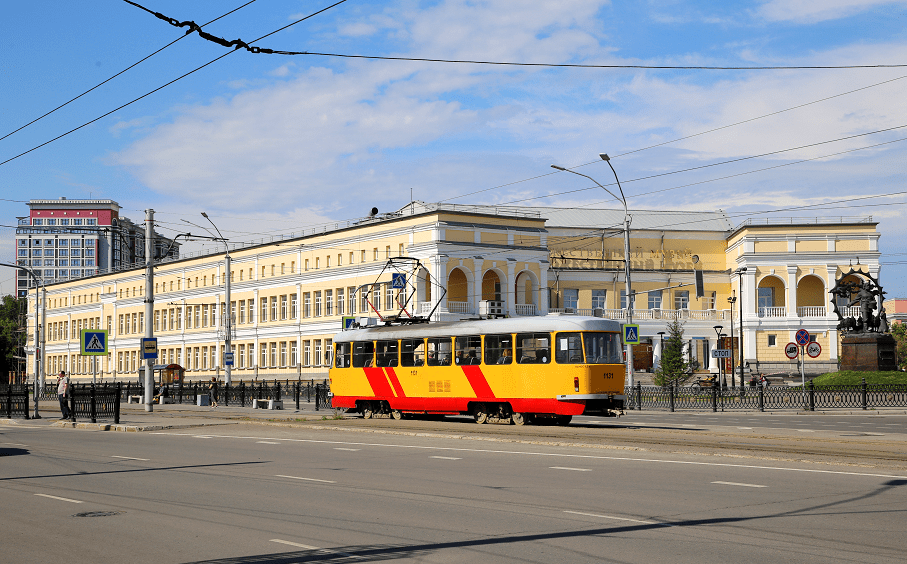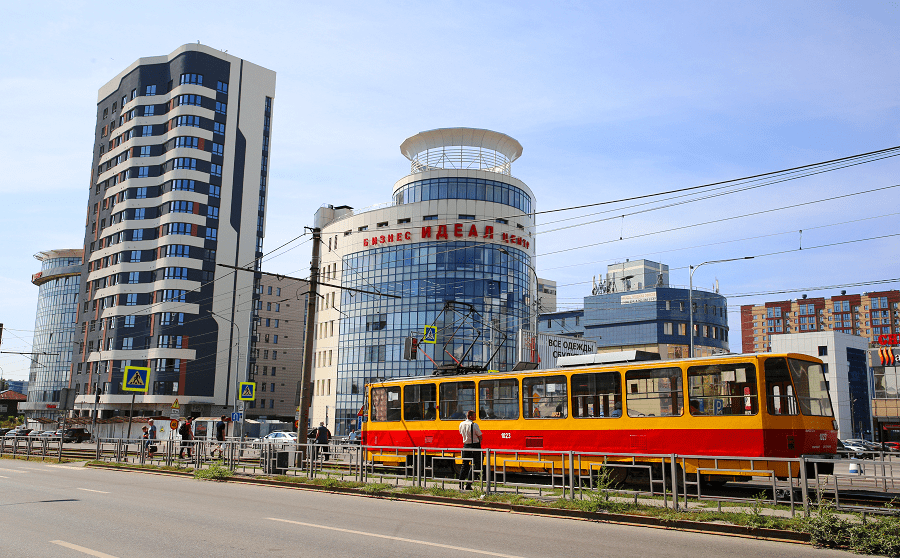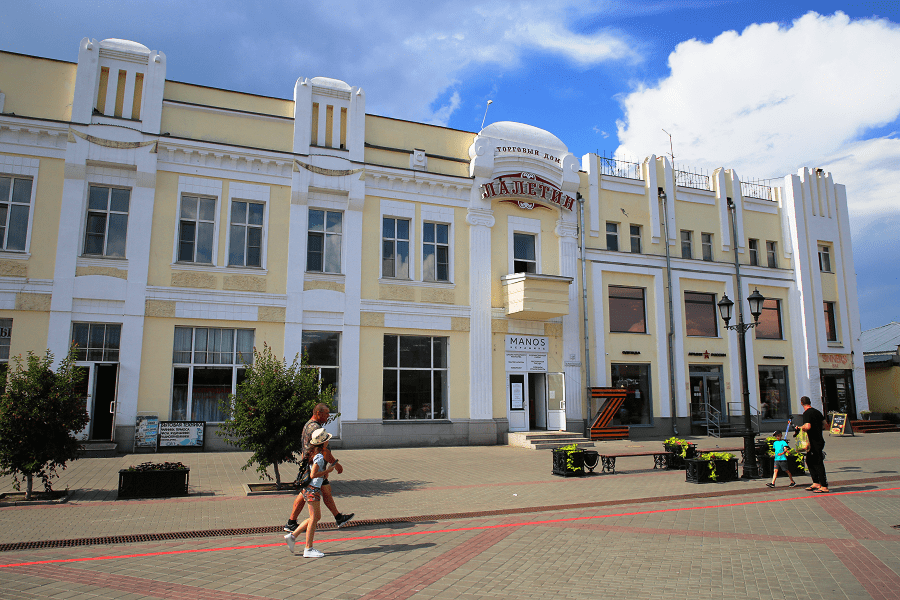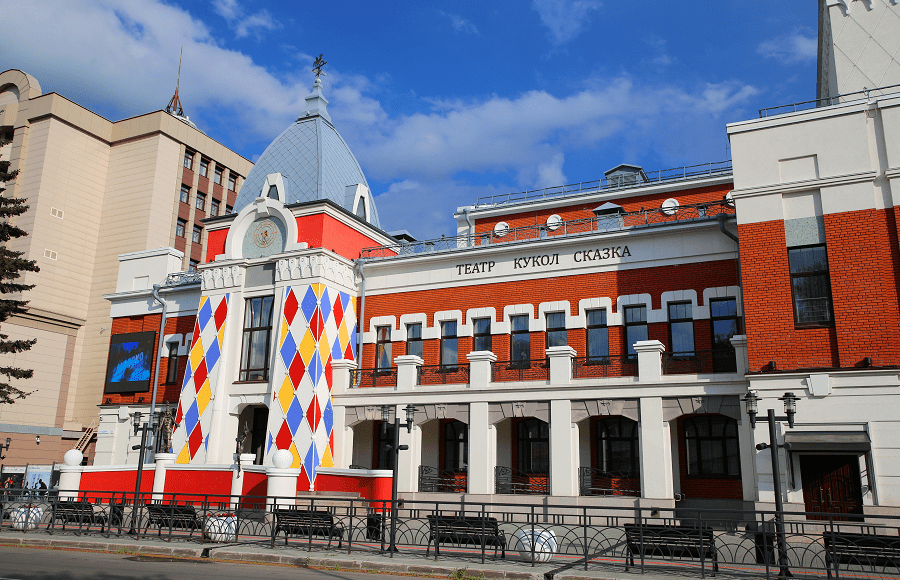Barnaul, a city in Russia, is the administrative center of the Altai Krai (since 1937) and the urban district of the same name. The city’s population is 623,057 (2023), the fifth most populous city in Siberia, and the twentieth most populous in Russia. Located in the south of Western Siberia at the confluence of the Barnaulka River and the Ob, it arose in the 1730s and developed as a village at the silver smelter of Akinfiy Demidov.
A large transport hub, industrial, cultural, medical and educational center of Siberia, it has the status of City of Labor Valor.
Economy
Barnaul is one of the most important economic centers in Western Siberia. The city’s economy is based primarily on trade and services.
In 2012, Forbes magazine ranked Barnaul 20th in the best cities in Russia for business development.
Most large industrial enterprises are located in the northern, western and southern parts of the city.
The index of industrial production in the 2010-2020s varied in the range, from 105.5 to 107.6%. The greatest growth in volumes is shown by enterprises producing vehicles, equipment and metalworking, chemical industry, processing industry, clothes, paper and paper products.
The volume of shipped goods of own production, services and work performed by large and medium-sized organizations in Barnaul in 2022 amounted to 157.4 billion rubles, including 129 billion rubles attributable to manufacturing industries.
The main fixed-line operator is the Altai branch of OJSC Rostelecom, which has 47 automatic telephone exchanges. The number of digital PBXs is 76%. The capacity of the telephone network is more than 230 thousand numbers, while the level of telephone penetration of Barnaul residents is more than 85%.
There are several alternative fixed-line operators – companies: DialogSibir-Barnaul (DialogTelecom brand), Dianet, MTS, Intelbi TTK, Intersvyaz, Prostor Telecom, Siberian Networks, TTK Western Siberia, Enforta and Dom.ru.
Cellular communication services in the city are provided by five federal operators: Beeline, MTS, MegaFon, Tele2 and Yota.
There are more than 100,000 people employed in the service and trade sectors. In 2008, the network of consumer market enterprises increased by 272 enterprises, including 15 public catering enterprises, 96 retail trade enterprises and 161 consumer service enterprises. Due to the opening of these enterprises, 2,100 new jobs were created. Retail trade turnover in 2010 amounted to 90 billion rubles (in comparable prices by 2009, it increased by 7.2%).
Transport
Barnaul is a major transport hub, located at the entrance to the federal highway P256 Chuysky Trakt. Here begins the federal highway A322 Barnaul – Rubtsovsk – the border with the Republic of Kazakhstan, which is part of the Asian route AH64 and connects Barnaul with Pavlodar, Semipalatinsk, Astana, Kokshetau and Petropavlovsk.
Sredsib, Yuzhsib and Turksib, territorially related to the West Siberian Railway, pass through the city. The railway station of the same name and located in the city is the main one in the Altai Krai of the West Siberian Railway.
The international airport, named after G.S. Titov, is located 17 km west of the city. There is a cargo river port on the Ob. The passenger turnover of the Barnaul bus station averages 4,500 people per day. The city is connected by bus services with all 60 districts of the Altai Krai, as well as with neighboring regions: the Altai Republic, Novosibirsk, Kemerovo and Tomsk regions.
Regular bus services operate to the cities of Kazakhstan: Kokshetau, Pavlodar, Semipalatinsk, Ust-Kamenogorsk and Alma-Ata. Since July 2011, a new route to Krasnoyarsk has been open. City transport is represented by buses and minibuses, trams (eight routes) and trolleybuses (three routes).
The first tram was launched in 1948; the first trolleybus in 1973. From 2000 until the spring of 2011, double-decker MAN buses could be seen on the city streets. In addition to double-decker buses, “accordion” buses were common in Barnaul, but, over time, they disappeared from the city streets.
Architecture and main sights
Initially, the city was built in the image and likeness of St. Petersburg, which largely determined the appearance of the central part of Barnaul. The architects A. I. Molchanov and Y. N. Popov, who shaped the appearance of Barnaul, were students and followers of D. Quarenghi and C. Rossi.
In Barnaul, there are more than 20 architectural and historical monuments of the 18th and first half of the 19th centuries, maintained in the traditions of Classicism: a unique silver smelter complex, Demidovskaya Square – an example of public and administrative areas, the ensemble of the Peter and Paul Line (now Polzunova Street). Eclecticism is present in the buildings of the City Duma, the Polyakov Trading House (Krasny department store), the Budkevich gymnasium (on Krasnoarmeysky Prospekt) and the estate of engineer A. Lesnevsky (Polzunov St., 56).
On May 2, 1917, many wooden buildings, decorated with expressive house carvings, were destroyed by a major fire. Brick buildings were also damaged. In the 1930s, most of the temples and cathedrals of Barnaul were destroyed or rebuilt, so the original appearance of the historical part of the city was not preserved. One of the largest surviving churches in Barnaul is the Intercession Cathedral.
The 1930s were marked by the construction of public and residential buildings in the constructivist style. Examples include the BMK residential area, a hospital, a garment factory on Vorovskogo Street and adjacent buildings. Also interesting is the ensemble of buildings from the 1930s to the 1950s on Lenin Avenue, the main street of the city.
It is one of the favorite walking places for city residents; its boulevard stretches from Lev Tolstoy Street to October Square. Popular meeting places are at the Cosmos fountain and the zero kilometer (stele with a Kolyvan vase).
Established in 1823, the Altai State Museum of Local Lore is the oldest in Siberia, with rich reserves and exhibitions.
In 2012, next to the museum in a building that is an architectural monument of federal significance, the newly- restored Mountain Pharmacy Museum.
Well-known museums include the State Museum of the History of Literature, Art and Culture of Altai and the State Art Museum of the Altai Krai. The exhibition hall of the Union of Artists of the Altai Territory has been operating for many years.
In 1990-2000, the Museum of the History of Orthodoxy in Altai, the Carmine Gallery, the Ruslan Dultsev-Detochkin Auto Theft Museum, the Universum Gallery and the World of Time Museum, appeared. Altai Regional Universal Scientific Library, named after V. Ya. Shishkov, is the largest educational center in Altai.
Among the exhibitions of city museums are halls dedicated to V. M. Shukshin, mining in Altai, the fauna of Siberia, etc. In 2007, the municipal museum “City” opened, and, on January 24, 2008, the Museum of the History of the Development of Education. The city also has contemporary art galleries “Banderol” and “Republic of Fine Arts.”
See also Monuments of Barnaul.
Distance to Moscow (by car): 49 hr (3,586 km) via М51/Р-254
Main information
Area: 940 km2 (360 sq mi)
GPS coordinates: 53°20′55″N 83°46′35″E
Population: 623 057
Language: Russian
Currency: Russian Roubles (₽)
Visa: Russian
Time: UTC+7 (MSK+4)
Postal code: 656000 – 656999, 901024, 901213
Phone code: +7 3852





